The electric bike manufacturing industry forms the backbone of the global sustainable transportation and green mobility sector, which serves various segments from urban commuters to recreational riders and delivery services. Therefore, with constant growth in environmental consciousness and electric vehicle adoption, establishing an electric bike manufacturing plant presents a promising business opportunity.
The electric bike manufacturing industry is a complex and capital-intensive industry with great potential for new entrants. However, this venture requires careful planning, significant investment, and compliance with automotive and safety regulations. From component sourcing to regulatory requirements, every phase of the business is to be conducted with utmost precision. Businesses can streamline this process by leveraging on-demand professional resources, which provide feasibility analysis, cost estimations, and requirements for technical necessities.
Step-by-Step Guide to Setup Electric Bike Manufacturing Facility
Step 1: Conducting Market Research and Feasibility Study
Analyzing the Market:
Beyond traditional business segments such as urban transportation and recreational cycling, enterprises should consider emerging and upcoming trends. For example, demand for high-performance electric bikes with extended battery range is soaring, and firms have come up with dedicated product lines featuring superior motor efficiency and minimal charging time.
Another aspect is sustainability, where the demand for eco-friendly production processes and recyclable materials is rising. Several leading brands have announced initiatives for transitioning to carbon-neutral manufacturing facilities and partnering with certified battery recycling programs.
Analyze the strategies and advanced technologies offered by significant electric vehicle manufacturers in the market. For instance, advanced battery management systems are designed for maximizing battery life and performance. These use sophisticated monitoring mechanisms to achieve superior energy efficiency and safety protection.
Businesses need to monitor industry shifts, technological advancements, and strategic developments constantly to gain a competitive edge. Expert insights can help enterprises stay informed about market trends, competitor strategies, and innovation landscapes. Companies can make data-driven decisions to enhance their market positioning and drive sustainable growth by using tailored research.
A robust study is essential, and businesses should also consider regional factors. For instance, a plant in urban regions might focus on commuter-focused electric bikes due to traffic congestion, while a coastal area plant might cater to tourist-oriented products and extended distribution networks.
Estimate the capital needed for land acquisition, infrastructure development, machinery, working capital, and research and development. Recent investments in the electric vehicle manufacturing sector highlight the significant financial commitments involved in this industry.
Step 2: Business Plan Development
Include a comprehensive financial model, considering initial investment and operating costs. Address sustainability initiatives, which can attract investors and customers. For instance, leading companies are working towards goals of reducing environmental impact through use of renewable energy and sustainable manufacturing practices. Many have targeted achieving carbon-neutral operations as part of their long-term environmental vision.
Business Model: Businesses should plan whether to focus on manufacturing standard electric bikes, specialized high-performance models, private labeling, contract manufacturing, or a combination of these approaches and build a business model accordingly.
Funding Strategy: Outline potential funding sources, including equity investment, bank loans, government grants for green mobility manufacturing, or strategic partnerships with automotive companies.
Production Capacity: Define your target production volume based on market analysis and available resources, considering whether to start with small-scale operations or aim for large-scale production.
Marketing and Sales Strategy: Develop plans for branding, distribution channels including dealership networks, online platforms, retail outlets, and direct-to-consumer sales, and customer acquisition through digital marketing and demonstration programs.
Risk Assessment: Identify potential risks, such as component price fluctuations, battery supply chain disruptions, regulatory changes in vehicle safety policies, or challenges in charging infrastructure, and propose mitigation strategies.
Step 3: Navigating Legal Requirements and Obtaining Necessary Permits
Compliance with legal and regulatory frameworks is essential. Key steps include:
Business Registration: Register your company in accordance with local laws and manufacturing regulations.
Automotive Approvals: Obtain necessary automotive certifications, as electric bike manufacturing involves vehicle safety standards that must meet regulatory requirements for braking systems, lighting, and electrical safety.
Factory Licenses: Secure licenses required for operating a manufacturing facility, including industrial safety board approvals and workplace safety compliance certificates.
Product Certifications: Aim for certifications related to vehicle quality standards, battery safety regulations, electromagnetic compatibility testing, and product liability insurance to ensure market acceptance.
Quality Certifications: Obtain certifications such as ISO standards for quality management, automotive quality specifications, and testing facility approvals for product quality assurance.
Step 4: Selecting an Optimal Location and Develop Infrastructure
Choosing the right location is critical for operational efficiency. Consider factors such as:
Proximity to Suppliers: Access to component suppliers, battery manufacturers, motor producers, and electronics vendors. Proximity to automotive industrial zones reduces transportation costs and ensures steady component supply.
Logistics and Transportation: Ensure good connectivity to key markets, suppliers, and distribution facilities. Access to highways, railways, and shipping ports is essential for distributing finished products and receiving bulk components.
Utilities Availability: Reliable access to electricity for manufacturing operations, adequate water supply for painting and cleaning systems, compressed air facilities, and sufficient space for component storage and finished goods warehousing.
Land Size: Adequate space to accommodate current operations including assembly areas, component warehousing, quality control laboratories, testing tracks, painting sections, and future expansions for increased capacity.
Step 5: Procuring Advanced Machinery and Quality Raw Materials
Investing in state-of-the-art machinery ensures efficient production and high-quality output. Essential equipment includes:
Frame Manufacturing Equipment: Tube cutting and bending machines, welding equipment including robotic welders, frame alignment jigs, powder coating systems for finishing
Assembly Line Equipment: Conveyor systems for production flow, automated torque wrenches, wheel assembly stations, electrical wiring harnesses installation tools
Battery Assembly Systems: Battery pack assembly equipment, battery management system integration tools, testing and charging equipment, safety enclosure fabrication machines
Motor Integration Equipment: Motor mounting fixtures, gear assembly systems, electrical connection testing equipment, dynamometer for performance testing
Quality Control Equipment: Frame strength testing apparatus, electrical safety testers, ride simulation equipment, battery performance analyzers, brake testing machines
Utilities Infrastructure: Electrical distribution systems with backup power, compressed air generation equipment, paint booth ventilation systems, fire suppression systems
Raw Material Requirements:
Source quality components from reliable suppliers, including aluminum or steel tubing for frames, electric motors with appropriate power ratings, lithium-ion battery cells and management systems, controllers and display panels, braking systems including disc brakes, wheels and tires suitable for electric bikes, suspension components, lighting systems, appropriate wiring and connectors, and packaging materials that ensure product protection during transportation and storage.
Step 6: Building a Skilled Workforce
Recruiting and training skilled personnel is vital. Key roles include:
Mechanical engineers and electrical engineers for overseeing production processes, optimizing assembly parameters, equipment maintenance, and maintaining operational efficiency.
Quality control specialists to ensure products meet safety standards and performance specifications.
R&D team for developing new electric bike designs, improving battery technology, and creating innovative products with enhanced characteristics.
Sales and marketing professionals to drive market penetration, dealership network development, online presence, brand recognition, and customer engagement.
Safety compliance officers to ensure adherence to automotive regulations and certification requirements.
Production line workers and technicians trained in component handling, assembly procedures, quality inspection procedures, and safety protocols.
Companies with strong reputations in the electric vehicle industry have established comprehensive training programs to develop skilled workers, contributing to their reputation for quality and reliability.
Step 7: Implementing the Production Process
The electric bike manufacturing process involves multiple stages, which include:
Component Reception and Inspection: Receiving components from suppliers and conducting incoming quality control checks including dimensional verification, electrical testing, and classification by component type.
Frame Preparation: Tube cutting to specified lengths, bending operations for frame geometry, welding joints to create frame structure, alignment verification, surface preparation through cleaning and degreasing.
Surface Treatment and Painting: Applying powder coating or liquid paint systems, curing in ovens at controlled temperatures, quality inspection for finish uniformity, masking and protection of threaded areas.
Sub-Assembly Operations: Wheel building including spoke tensioning and truing, motor integration with wheel hubs or mid-drive systems, battery pack assembly with management system integration, wiring harness preparation, controller mounting and programming.
Main Assembly Line: Frame preparation with component mounting points, fork installation with headset bearings, wheel mounting and alignment, motor connection and cable routing, battery installation and secure mounting, controller and display panel integration, braking system installation and adjustment, gear system installation if applicable, lighting and safety equipment mounting.
Electrical System Testing: Battery charge and discharge testing, motor performance verification, controller functionality checks, display panel operation testing, lighting system verification, safety cutoff testing, electromagnetic compatibility testing.
Quality Inspection: Finished electric bikes undergo rigorous quality checks including visual inspection for defects, dimensional accuracy verification, electrical safety testing, brake performance testing, ride quality assessment on test tracks, battery range verification, assistance level functionality, and structural integrity assessment.
Packaging and Dispatch: Approved products are partially disassembled for efficient packaging, secured in protective materials with proper documentation including user manuals, warranty cards, maintenance guidelines, serial number registration, and stored in warehouses before distribution to customers.
Step 8: Establishing Marketing and Distribution Channels
A robust marketing and distribution strategy is essential for establishing a strong presence in the market. Consider the following approaches:
Dealership Network Development: Collaborate with bicycle retailers, automotive dealers, specialty electric vehicle stores, and mobility solution providers to ensure widespread availability and customer touchpoints.
Online Platforms: Develop e-commerce capabilities through company websites, marketplace partnerships, social media engagement, and digital showroom experiences with virtual demonstrations.
Distribution Network: Establish relationships with logistics providers, regional distributors, service center networks, and spare parts suppliers to ensure comprehensive after-sales support.
B2B Opportunities: Supply electric bikes to delivery companies through fleet arrangements, partner with ride-sharing platforms, collaborate with corporate mobility programs, or supply to tourism operators and rental services.
Export Opportunities: Study international markets with growing sustainable transportation adoption and comply with their specific quality standards, certification requirements, and shipping regulations for successful market entry.
Step 9: Ensuring Compliance with Safety and Environmental Standards
Electric bike manufacturing involves handling electrical systems and battery components, making regulatory compliance crucial. Key measures include:
Worker Safety: Implement strict safety protocols for electrical systems handling, provide personal protective equipment including insulated gloves, safety glasses, and protective gear, and train employees on battery safety, machinery operation, and workplace hazards.
Battery Safety Management: Establish proper battery storage and handling procedures, maintain fire suppression systems specifically designed for lithium batteries, implement charging area safety protocols, and train staff on emergency response procedures for battery incidents.
Electrical Safety: Install proper grounding systems throughout the facility, implement lockout-tagout procedures for electrical equipment maintenance, maintain insulated work environments for high-voltage systems, and monitor electrical safety to comply with occupational health regulations.
Emissions Control: Implement proper ventilation systems for painting operations, install air filtration systems for welding areas, and monitor environmental emissions to comply with local regulations.
Energy Efficiency: Adopt energy-efficient manufacturing equipment, implement regenerative testing systems, consider utilizing renewable energy sources for facility operations to reduce operational costs and demonstrate environmental commitment.
Governments and regulatory bodies worldwide are increasingly enforcing stringent automotive safety regulations. Leading electric vehicle companies have pledged to reduce their environmental impact by adopting sustainable manufacturing practices and circular economy production systems.
Step 10: Planning for Future Expansion and Innovation
Once the electric bike plant is fully operational, focus on scaling up production and expanding market reach. Key strategies include:
Increasing Production Capacity: Expand facilities by adding assembly lines, upgrade to higher-capacity automated equipment, or establish additional manufacturing facilities in different regions to meet growing market demand.
Launching New Products: Invest in research and development to create innovative products, such as high-performance sport electric bikes, cargo electric bikes for delivery services, folding electric bikes for urban mobility, off-road electric mountain bikes, or electric bike sharing systems for smart cities.
Diversification: Explore new markets such as electric scooters, electric motorcycles, conversion kits for traditional bikes, battery systems for other applications, or entry into charging infrastructure solutions.
Technology Integration: Develop advanced features like smartphone connectivity with GPS navigation, artificial intelligence-based riding assistance, predictive maintenance alert systems, improved battery technologies for extended range, regenerative braking systems, or IoT integration for fleet management.
Vertical Integration: Consider backward integration by establishing component manufacturing facilities, battery pack production lines, or forward integration through company-owned dealerships, service centers, and charging station networks to reduce dependency on intermediaries and improve margins.
Strategic Partnerships: Consider collaborations with automotive manufacturers, technology companies for connectivity features, battery manufacturers for supply security, charging infrastructure providers, or smart city project developers to strengthen market presence.
Exclusive Insights: Unlock Hidden Market Opportunities
The rise of urban mobility solutions is reshaping the electric bike industry, with manufacturers exploring partnerships with municipal governments, smart city projects, and last-mile delivery companies looking to replace conventional vehicles with sustainable alternatives.
Advanced connectivity technology is a major focus, with companies investing in GPS tracking systems, smartphone integration features, theft prevention systems, and rider analytics platforms to differentiate products in competitive markets.
Automation and production efficiency are becoming increasingly important, with manufacturers implementing robotic welding systems, automated testing equipment, quality assurance automation, and integrated manufacturing execution systems.
Circular economy approaches including battery recycling programs, modular design for easy repairs, component remanufacturing initiatives, and comprehensive sustainability certification are gaining traction among environmentally conscious manufacturers.
Customization and premium offerings are emerging as market differentiators, with personalized design options for consumers, specialized models for specific use cases, subscription-based ownership models, and certified performance upgrades for enthusiast markets.



